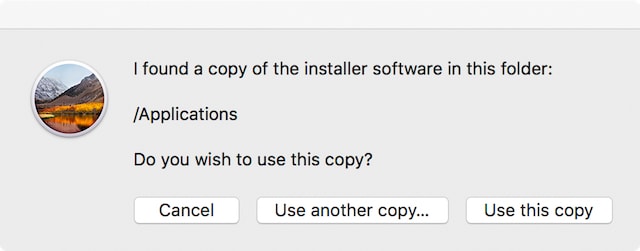

- #Creat bootable high sierra usb how to#
- #Creat bootable high sierra usb for mac#
- #Creat bootable high sierra usb install#
- #Creat bootable high sierra usb windows 10#
- #Creat bootable high sierra usb license#
When you are with the settings, select erase to partition the USB, after the USB erased click is done, and close the disk utility. In Disk Utility select the USB and Erase it with the following settings.Open spotlight & search for Disk Utility.In other words, you need to erase the USB, and to do that follow the below steps.
#Creat bootable high sierra usb how to#
macOS Mojave Public BetaĪctually, Before getting started with How to Create Bootable USB Flash Drive for macOS Mojave on Windows 10, you have to partition the USB Flash Drive.
When the installation completes close the Developer utility tool. #Creat bootable high sierra usb install#
Enter your password for confirmation and click install the software. Select a location where to install and click Install. #Creat bootable high sierra usb license#
Agree to the license and agreement of Developer tool and click continue. Download the Developer Tool and double-click on it to start the installation process. If you don’t have a developer account follow the below steps to download macOS Mojave. Since the macOS Mojave Public beta has been released, you have to download that from App store if you are a developer account. To create a bootable USB for macOS Mojave on windows 10, the very first thing you need is the macOS Mojave. #Creat bootable high sierra usb windows 10#
Commands to Copy macOS Mojave to USB Flash Drive Create Bootable USB for macOS Mojave on Windows 10. Because VirtualBox for macOS Mojave has many errors. If you are wondering to use the VirtualBox to Create Bootable USB for macOS Mojave on windows 10, I won’t recommend that. Install macOS Mojave on Vmware on Windows 10. If you don’t know How to Install macOS Mojave on Vmware, read the below post. So, in order to create bootable USB for macOS Mojave on windows 10, download and Install the Vmware Workstation Pro, after that install in it the macOS Mojave 10.14 Yes, the same method I am offering you to use, I know it is lengthy but it gives you 100% Result in one try. then I downloaded and Install Unibeast inside the macOS High Sierra on Vmware Workstation. and that was the macOS High Sierra itself on windows 10 which I used to create bootable USB Flash Drive on Windows.ĭo you know what I did to create bootable USB Flash drive for macOS High Sierra, I installed macOS High 10.13 inside the Vmware Workstation Pro. #Creat bootable high sierra usb for mac#
I also used that many times and none of them worked to create bootable USB for mac on windows 10 except for one. You can now quit Terminal and eject the volume.Well, you probably have used the TransMac in macOS High Sierra in order to create bootable USB for Mac.
When Terminal says that it's finished, the volume will have the same name as the installer you've downloaded, such as Install macOS Monterey. After the volume has been erased, you may see an alert stating that Terminal would like to access files on a removable volume. Terminal displays the progress as the volume is being erased. When prompted, type Y to confirm that you want to erase the volume, then press Return. Terminal doesn't show any characters as you type your password. When prompted, type your administrator password and press Return again. * If your Mac is using macOS Sierra or earlier, include the -applicationpath argument and installer path, similar to the way this was done in the command for El Capitan. Sudo /Applications/Install\ OS\ X\ El\ Capitan.app/Contents/Resources/createinstallmedia -volume /Volumes/ MyVolume -applicationpath /Applications/Install\ OS\ X\ El\ Capitan.app Sudo /Applications/Install\ macOS\ High\ Sierra.app/Contents/Resources/createinstallmedia -volume /Volumes/ MyVolume Sudo /Applications/Install\ macOS\ Mojave.app/Contents/Resources/createinstallmedia -volume /Volumes/ MyVolume Sudo /Applications/Install\ macOS\ Catalina.app/Contents/Resources/createinstallmedia -volume /Volumes/ MyVolume Sudo /Applications/Install\ macOS\ Big\ Sur.app/Contents/Resources/createinstallmedia -volume /Volumes/ MyVolume Sudo /Applications/Install\ macOS\ Monterey.app/Contents/Resources/createinstallmedia -volume /Volumes/ MyVolume If it has a different name, replace MyVolume in these commands with the name of your volume. These assume that the installer is in your Applications folder and MyVolume is the name of the USB flash drive or other volume you're using. 
 Type or paste one of the following commands in Terminal.
Type or paste one of the following commands in Terminal. 
Open Terminal, which is in the Utilities folder of your Applications folder.Connect the USB flash drive or other volume that you're using for the bootable installer.








 0 kommentar(er)
0 kommentar(er)
